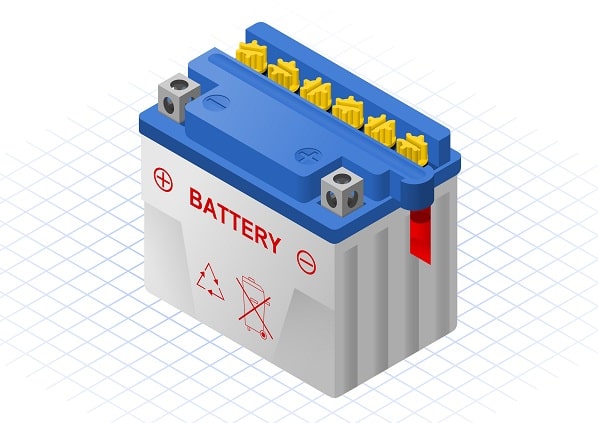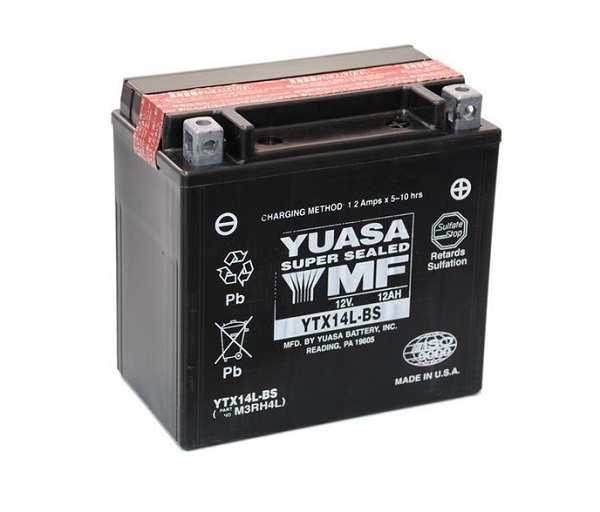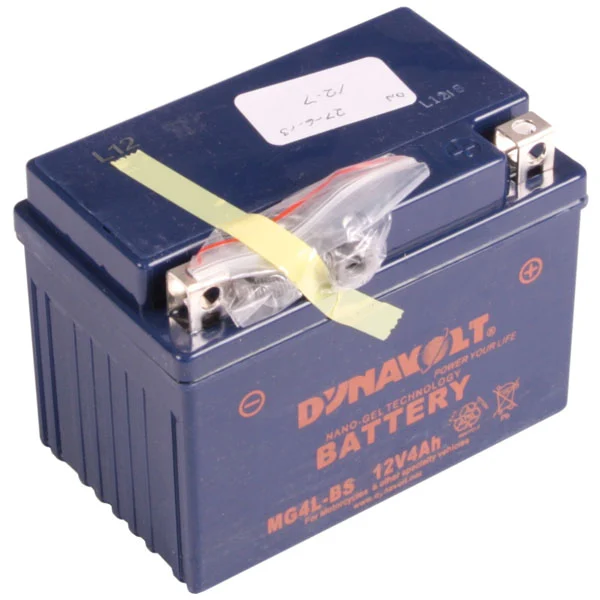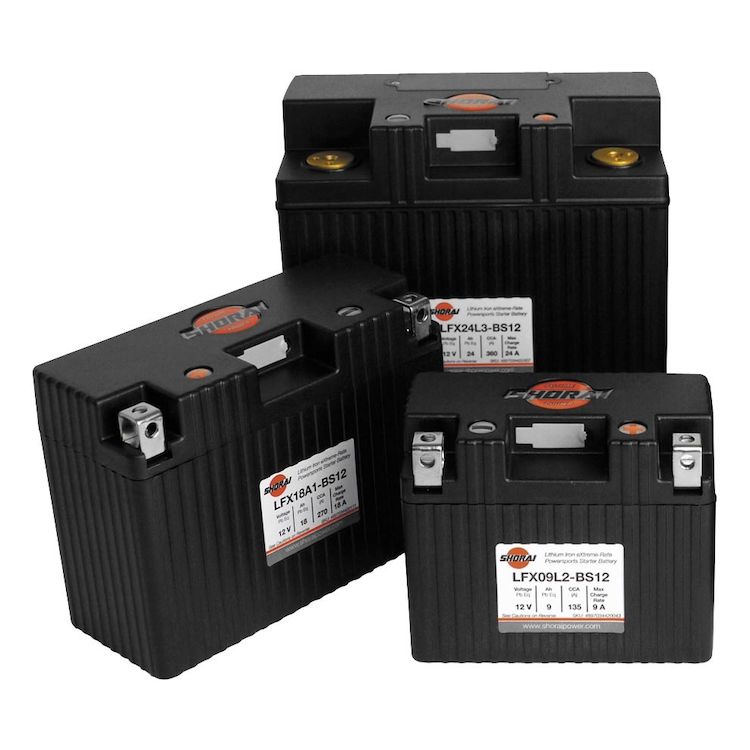Batteries are a necessary part of a modern motorcycle’s operation. The old days of kick starts and tuning carburetors are fading into the past.
Today’s street bikes are all fuel-injected, computer-controlled, and loaded with accessories. Sure there are a few minimalist bikes out there, but it’s a diminishing market for them – we like flashy things!
With this being an essential part of your bike, you want the best one possible, right?
So you start researching, which hopefully brought you here where we’ll sort out the main differing types and explain some measurements like CCA (Cold Cranking Amps) and Ah (Ampere-hours).
Let’s charge ahead…… (sorry- bad pun)
Important Terminology
While you can probably buy any of the following types of batteries for your bike, you need to check your owner’s manual for a couple of requirements. Yes, the CCA mentioned above is one.
Cold Cranking Amps
This is the number of amps supplied by your battery for 30 seconds at 7.2 volts at an ambient temperature of 32 degrees. Yeah ok – great?
In real-world terms, it’s the surge of power required to get your engine cranked up from a dead stop. The number in your owner’s manual is a minimum. If you buy a battery with a slightly higher value, it’ll help once you start adding accessories like GPS/nav systems, infotainment screens, etc.
Ampere Hours
If CCA is how much power a battery can put out, ampere-hours measure how long it can put out power. An 18-ampere-hour battery will provide one amp per hour for 18 hours or 18 amps for one hour. Again this is important when you start adding accessories.
Also read:
Types of Motorcycle Battery
Lead Acid (Wet Cell Batteries)

Also known as “conventional” or “traditional,” Lead-acid batteries are pretty old school. You may have experienced these in a car.
This battery has lead plates suspended in a bath of sulphuric acid and distilled water.
They are cheap but require periodic refills of water. Not to mention the fact that since they are only sealed with little plastic plugs, if your bike tips over, you get to add ‘spilling acid on your leg’ to your list of concerns.
Pros
- Inexpensive to make and buy
- Tried and true technology (150+ years old)
Cons
- Requires periodic maintenance
- Spill danger
Absorbed Glass Mat (AGM)

Also known as a “dry-cell” or “maintenance-free” battery, AGM batteries are a kind of natural progression from the wet-cell variety.
The ‘glass mat’ part of the name refers to the fiberglass mat that holds the acid.
These batteries are sealed, so the gasses expelled by wet cells are allowed to recombine into water, which is why these do not require the addition of water, making them maintenance-free.
Pros
- No outgassing
- No Acid spill danger
- Closer plates mean higher energy density.
Cons
- Less charge/discharge cycles
Gel Cell Batteries

Gell Cells are the other member of the maintenance-free lead-acid family of batteries.
The name comes from the addition of a silica powder to the acid, giving it a jelly-like consistency. Gel batteries are good choices if there is a higher risk of accidental damage as the gel won’t leak out if the casing is damaged. The gel also allows these batteries to be mounted sideways.
These batteries are known for good performance at higher ambient temperatures, where AGM’s power curve drops off. Due to a higher manufacturing cost, they are generally more expensive than an AGM battery with similar specs.
Pros
- No spillage
- Wide temperature range
Cons
- Slightly more expensive
- Slow charging
Lithium Batteries

There are a lot of myths and misconceptions around ‘Lithium Batteries.’ These myths have become widespread, and hopefully, we can set the record straight here.
Myth #1: They are a fire hazard
The biggest is perhaps, “oh, they are just like the lithium-ion batteries in laptops that catch fire.” I thought that myself before doing some research. It turns out that’s not the case at all!
The formulation is different, being a lithium-iron-phosphate blend. This blend gives up a little power (not an issue with bigger batteries) but is much more chemically stable. A modern motorcycle lithium-ion battery is not a fire hazard.
Myth #2: They drain quickly with accessories
Other myths like “parasitic drain like alarms will drain it to death” are addressed by “Battery Management Systems” (BMS). This is the electronics in a quality lithium battery that shuts it off before an overcharge that could cause overheating as well as shutting it down before being completely drained.
Myth #3: They have a shorter life span
Lithium batteries have a discharge/recharge cycle capacity of double or triple that of a conventional lead-acid battery, so you get a lot more riding out of them. The longer life helps to offset the fact that they are initially more expensive.
Myth #4: They are more sensitive to cold
Once it gets down around freezing, all batteries perform worse. The difference is that lithium batteries warm up under a load.
So warm it up by turning on accessories like your lights, heated seats, heated vest, etc., for a couple of minutes. The amount of electricity available will increase as the battery warms itself. Plus, you have a nice warm seat or vest.
Pros
- Lightweight
- Completely safe
- Longer life (discharge/recharge)
Cons
- Require a dedicated charger – see our guide the the best Lithium motorcycle battery charger.
- Sensitive to very cold
- More expensive for larger displacement motorcycles, but prices are falling.
FAQ’s
Are all motorcycle batteries the same size?
Nope. Just like motorcycles are different sizes, so are the batteries. The size difference can be as much as 4-5 centimeters.
Can I put a bigger battery in my motorcycle?
Yes and no. Bigger as in more powerful, yes. Bigger as in physical dimensions, probably not a lot bigger. Technically, it will work as long as it fits and the posts are lined up the same way. You may run into issues with the clamps that keep the battery from shifting.
How many volts is a motorcycle battery?
Motorcycle batteries are either 6 or 12 volts. Most modern motorcycles are 12 volts, while you frequently see 6 volts on older bikes from the 1960s and older.
How should I maintain my battery over the winter (non-riding) months?
That depends on your battery type. For your lead-acid batteries, including AGM and gel, put it on a ‘smart charger’ or ‘battery tender’; just make sure it specifically says that it’s compatible with your type. For Lithium batteries, you must use a dedicated lithium charger.
Can I use a car charger to charge my motorcycle battery?
No, you will permanently damage your battery! Due to their smaller size, motorcycle batteries cannot handle the higher rate of charge favored by car/truck chargers.
Conclusion
Lead-Acid batteries may still bear a label saying “conventional,” but they are in steep decline for motorcycles due to safety concerns.
AGM batteries are within a few dollars for most motorcycle fitments and are safer and more reliable.
Gel batteries are not as widely available for street bikes but are very popular for high vibration, rugged applications like dirt bikes and ATVs.
Lithium-ion batteries look to be the wave of the future, and prices are steadily coming down. Watch out for bargain lithium batteries without a good BMS; it’s well worth paying a bit more for a higher quality unit.
Bottom line, I would recommend the Lithium-ion if available, but at the least, get an AGM battery.